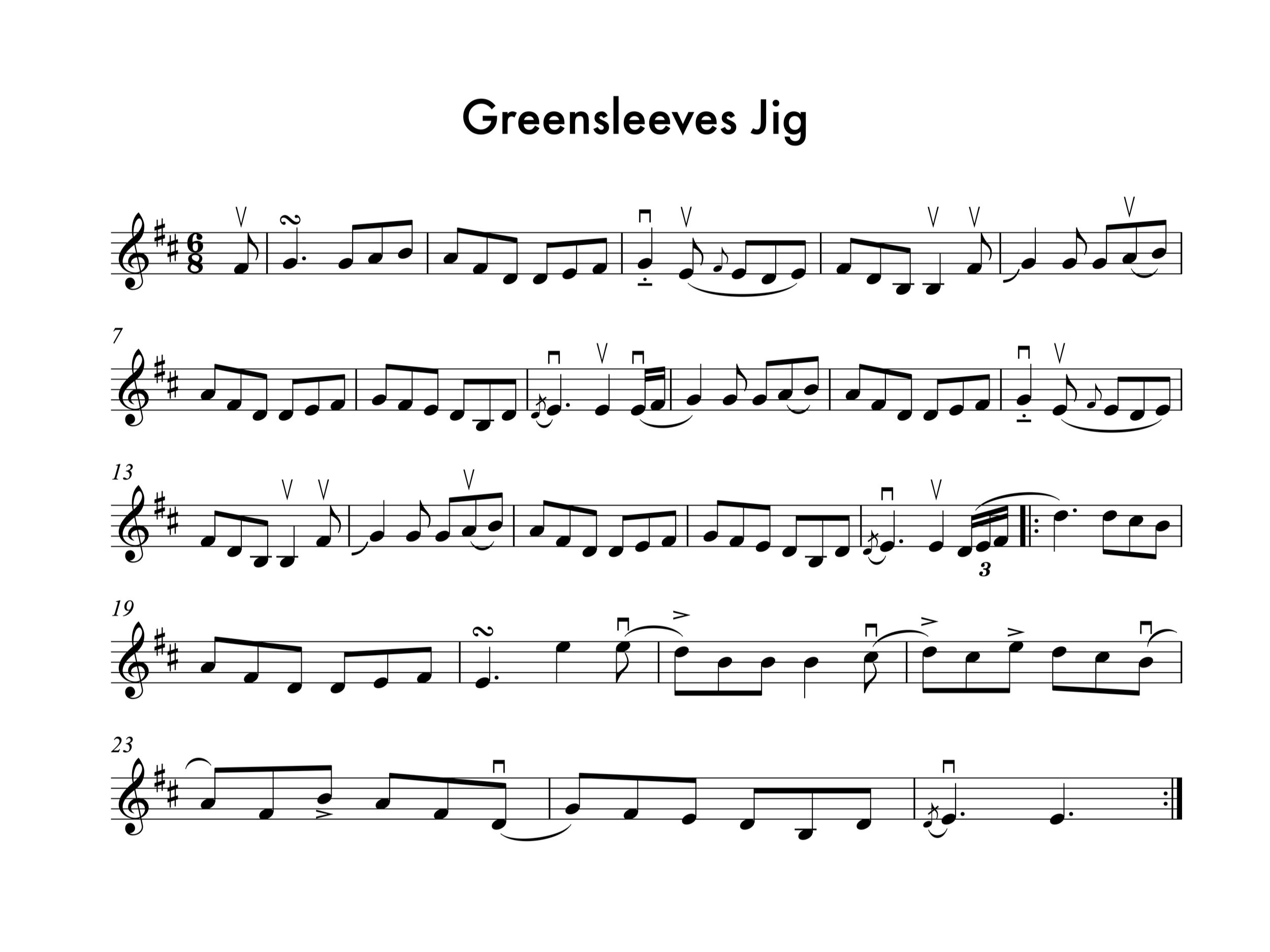Greensleeves Jig
There is a legend (which is probably not true) that Greensleeves was written by Henry the VIII for Anne Boleyn. I did a little research into this super-famous melody though, and found a lot of interesting things— for one thing, it is used by ice cream trucks in some parts of the world! Here is the history…the chords themselves seem to trace to Renaissance Italy and they became popular with English lute players (who were having a heyday at the time) and who decorated and embellished the basic structure with ornamentation and improvisation. A little later down the road sung versions of the melody we know appeared. These broadside ballads became immensely popular (and there were many different lyrics on many topics). They were sold in Elizabethan England as sheet music (called broadsides) by singing street vendors, who would try to interest people by performing the latest and greatest versions that they had to offer. It seems the Greensleeves-themed lyrics may have appeared first, and they really made the melody a hit! Within a short time there were many Greensleeves variations circulating. The lyrics continued to be re-worked and sold as broadsides for 100 years or more (through the 1700s) after the initial Greensleeves craze. I was thinking about all this and it occurred to me that this broadside sheet music industry which was based on re-composing existing material and re-publishing was kind of like the Elizabethan version of Tik Tok!
Considering it’s been around now for nearly 400 years in Greensleeves form and is known widely throughout the world, could it be the melody is almost like the number one hit of all time? Something to ponder. In any case, it wasn’t until 1871 that the Christmas-themed words were matched to it. These lyrics come from a longer poem the author had written (along with quite a few hymns) after recovering from life-threatening illness.
If you’d like to read more for yourself, the main article I’ve drawn from is here.
Notes on Playing the Tune
The turn sign is meant to indicate a grace note above then back to the note, then one below. When you slur into the ornamented note in measure 3 then the first note just becomes longer.
Somewhere along the way, I started playing a couple of variations on the basic melody, and some of them may be something I heard on Irish flute. You will notice measure 12, 14 and 15 are the main ones that are altered. When performing this with Katie, I believe we also took out the D# you sometimes hear in the second to last measures of each section because not all the instruments could play it. I have grown to really like the Bm chord there instead of B major.
A slight swing sounds good in a jig, which means the first of each group of 3 eighth notes can be a little longer and the second a bit shorter (not quite long enough to become dotted eighth though, because it tends to be too much then). This gives a nice bounce to the melody.
